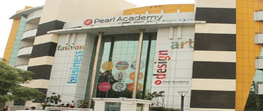![International Institute of Fashion Technology - [IIFT]](https://image-static.collegedunia.com/public/college_data/images/appImage/6868_IIFTDELHI_APP.jpg?h=240&w=1000&mode=crop)
International Institute of Fashion Technology New Delhi Placement 2025: Highest Package, Average Package, Top Recruiters
Course Finder
Search from 20K+ Courses and 35+ Streams
Popular Streams:
International Institute of Fashion Technology New Delhi: 5 Answered Questions
How much do the top B-schools like the IIMs FMS, MDI, XLRI, SP JAIN, JBIMS, IIFT, and NITIE inflate their placement reports?

In the placement process, it is not always the B-Schools that are responsible for reporting inflated packages, but rather the companies. The figure reported by placement cells is referred to as the "Cost to Company" (CTC) and not the take-home salary. This means that simply dividing the CTC by 12 is not an accurate reflection of what you will receive in your bank account each month.
CTC consists of two main components: fixed and variable. The fixed component includes your basic salary, HRA, TA, LTA, employer's contribution to the provident fund, joining bonus, retention bonuses, and ESOPs. The variable component is based on both your performance and the company's performance and is paid out in lump sums either yearly or half-yearly.
Your take-home salary at the end of each month is calculated as basic salary + HRA + TA + other allowances - provident fund deduction - tax. The remaining amount is given to you at the end of the year. To illustrate how companies may inflate their CTC figures, here are a few examples:
- Amazon:
Fixed component: 9 lakhs
Year 1 end retention bonus: 2 lakhs
Year 2 end retention bonus: 1.5 lakhs
ESOP: 5 lakhs to be paid over 3 years
Performance bonus: separate/not reported CTC: 17.5 lakhs
Take-home salary: 65-70k
- Goldman Sachs:
Fixed component + Variable component: 14.5 lakhs
Relocation: 2,00,000 INR (one-time payment)
Supplemental Salary: 3,50,000 INR (supplemental salary is an accrued bonus paid out in monthly installments pro-rated from the date of joining, only applicable during the first year of joining)
CTC: 20 lakhs
Take-home salary: 95-98k
- RBS India Development Center (Royal Bank of Scotland back-end):
Fixed component: 9 lakhs
Variable component: 10-20% of a fixed component
CTC: 10.8 lakhs
Take-home salary: 65-68k
As seen from the examples, despite Amazon having a CTC that is double that of RBS IDC, their take-home salary is the same. This is the typical way it works. The placement teams likely do not have much control over the process.
How are the finance placements at IIFT Delhi?
If we see IIFT Delhi placements domain-wise then, the percentage of finance companies visiting the campus is just after consulting at 23%.
The sector-wise distribution shows BFSI sector dominates the companies visiting the campus at 30%. Major finance companies that visit the campus are Deloitte, JP Morgan Chase & Co., Goldman Sachs, HSBC, Citi Bank, etc.
What is the minimum and maximum salary offered during IIFT Delhi campus placements?

IIFT Placement 2023 witnessed 108 companies, an average CTC of Rs 29.10 Lakhs per annum, and a median CTC of Rs 26.5 Lakhs per annum. The highest domestic CTC offered stood at Rs 75.6 Lakhs per annum. The top 25% of students of the batch received an average CTC of Rs 46.9 Lakhs per annum.
What do profile-trading companies look for in students at IIFT Delhi when they pick candidates for summer internships or final placements?
Two items are sought for by traders:
- knowledge, but more importantly, trade enthusiasm
- the capacity to make decisions
Knowledge & Passion
Basic knowledge of commodity and oil understanding for traders. like the peaks, troughs, and volume of well-known commodities. Your viewpoint on a certain product or the global economy. How do you stay informed about news? For example, do you understand how to use the Bloomberg Terminal? What are your alternatives and duties?
Decisions
This is especially crucial when you attend interviews. They want to know about any situations where you had to make difficult choices, or else they might instigate something to make you the subject of a trade judgment.
Due to the fact that the majority of trade companies entering IIFT will offer positions where you will need to make difficult decisions on a regular basis and mistakes might be expensive!
They focus more on your attitude than your grades!
Can a BCom fresher with finance specialisation get a good placement at b-schools like IIFT, IIM Trichy, and other new IIMs?

Since you are only concerned about placements, let me tell you that placement depends not on one but many factors. Some work experience, educational background, presence of mind, knowledge, and obviously luck. Based on your profile the pros and cons you will experience are as follows
Pros
- You are already well-versed with the basics of the program which makes it easier to catch up initially.
- Some companies, mainly Sales, Marketing, and Finance, prefer freshers over work experience.
- You might have already figured out your interests because you are familiar with the program.
Cons
- Some companies, mainly in the operations and consulting sector, prefer people with work experience only.
- A little diversity won’t hurt
Lastly, since you are a fresher, before you join a B School, gather knowledge through books or certifications.
Frequently Visited Companies
| Companies | |||
|---|---|---|---|
| Shahi Exports Pvt. Ltd. | |||
Do you think the placement data is wrong ? Report Here

![International Institute of Fashion Technology - [IIFT]](https://image-static.collegedunia.com/public/college_data/images/logos/1422894081Capturefg.jpg?h=71.7&w=71.7&mode=stretch)




![National Institute of Fashion Technology - [NIFT]](https://image-static.collegedunia.com/public/college_data/images/appImage/27897_NIFT_New.jpg?h=111.44&w=263&mode=stretch)







![Unitedworld School of Creative Intelligence - [USCI]](https://image-static.collegedunia.com/public/college_data/images/appImage/undefined?h=111.44&w=263&mode=stretch)








![International Institute of Fashion Technology - [IIFT]](https://image-static.collegedunia.com/public/college_data/images/logos/1495712185405292303695296370103782639962nsddddddddddd.jpg?h=72&w=72&mode=stretch)
![International Institute of Fashion Technology - [IIFT]](https://image-static.collegedunia.com/public/college_data/images/logos/1422896521Capturefg.jpg?h=72&w=72&mode=stretch)
![International Institute of Fashion Technology - [IIFT] Naraina](https://image-static.collegedunia.com/public/college_data/images/logos/1478083770IITS.jpg?h=72&w=72&mode=stretch)
![International Institute of Fashion Technology - [IIFT]](https://image-static.collegedunia.com/public/college_data/images/logos/1585811323logo.jpg?h=72&w=72&mode=stretch)

![Polytechnic for Women - [PFW]](https://image-static.collegedunia.com/public/college_data/images/logos/1521115926Capture123.jpg?h=72&w=72&mode=stretch)

![Academy of Applied Arts South Campus - [AOAA]](https://image-static.collegedunia.com/public/college_data/images/logos/14643539511464242936logo_21.png?h=72&w=72&mode=stretch)
![Indian Institute of Art and Design - [IIAD]](https://image-static.collegedunia.com/public/college_data/images/logos/1608710429IIADlogo220px21.jpg?h=72&w=72&mode=stretch)





![fInternational College of Fashion - [ICF]](https://image-static.collegedunia.com/public/college_data/images/logos/1688717265icflogo.png?h=72&w=72&mode=stretch)

![Apeejay Institute of Design - [AID]](https://image-static.collegedunia.com/public/college_data/images/logos/1649237724d.png?h=72&w=72&mode=stretch)
![Delhi Institute of Fashion and Technology - [DIFT]](https://image-static.collegedunia.com/public/college_data/images/logos/1493012054logo.jpg?h=72&w=72&mode=stretch)



Comments